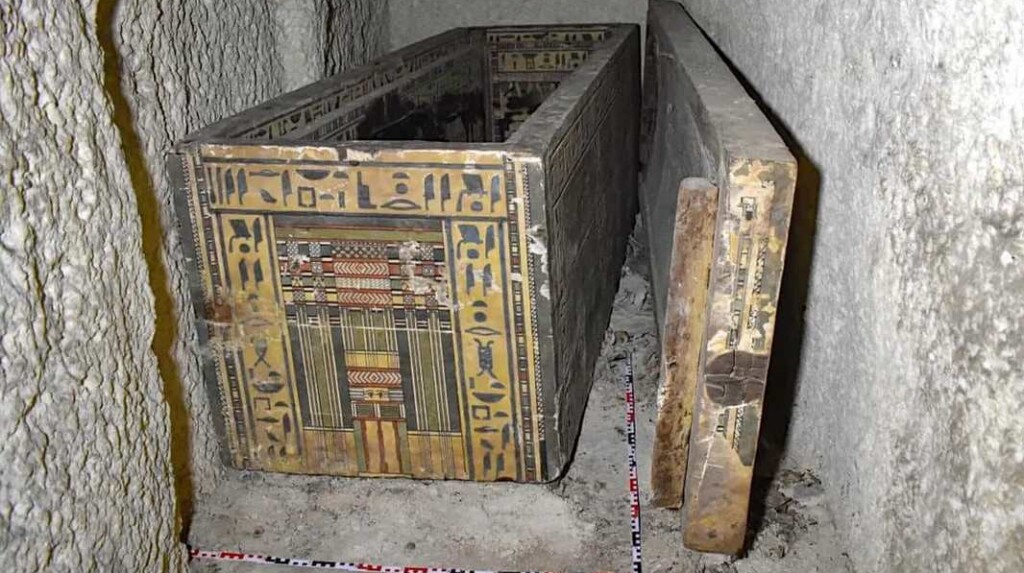 credit – Egyptian Ministry of Tourism and Antiquities
credit – Egyptian Ministry of Tourism and AntiquitiesThere’s never a dull moment down in the land of the Nile for those with a shovel.
A recent discovery of two exquisitely detailed sarcophagi, one sealed inside another, was made recently in the ancient land of Asyut, dating to the 19th century BCE, in the earlier days of the Middle Kingdom.
Interred within was Idi, the daughter of a local governor. Inscribed upon them was the moniker “Lady of the House,” alongside hundreds of hieroglyphs instructing her how to travel over to the next world.
The coffins were found during archaeological cleaning work inside the tomb of Asyut’s governor Djefaihapi, which happened to be the largest non-royal tomb in Egypt at that time, indicating that he was one of the most important rulers of any territory in ancient Egypt.
Idi’s burial chamber was around 50 feet below ground, but even so, it was plundered by tomb robbers long ago. Fortunately, they couldn’t carry off the sarcophagi which are probably the most important and relevant objects to scientists today.
The preliminary examination works of the woman’s skull and bone remains indicated that she had died at a young age before she was 40 and had suffered a congenital defect in the foot, a statement from Egypt’s Supreme Council of Tourism and Antiquities said.
THE LATEST FROM THE NILE:
According to Joann Fletcher, an archaeologist at the University of York who was not involved in the excavation, the Middle Kingdom is one of the lesser-understood periods of Egyptian history, sandwiched between the pyramid builders of the Old Kingdom, and the much better-documented New Kingdom, featuring some of the civilization’s most renowned native figures such as Tutankhamun and Ramses II.
The discovery of Idi will help inform Egyptologists about the manners and customs of family burials during this overshadowed period in history.
Who Do You Know That’s Fascinated By Ancient Egypt? SHARE The Story With Them…
Source link

